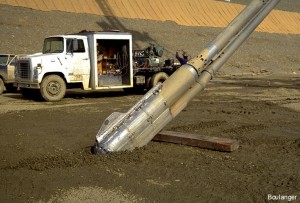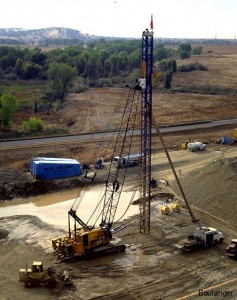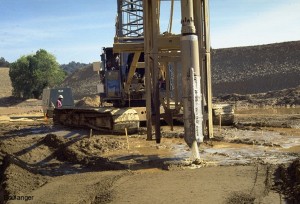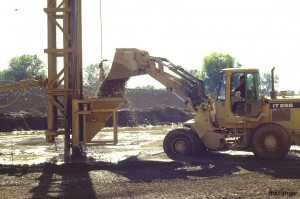Vibroreplacement Stone Columns at MIA Dam
These photos are of vibroreplacement stone column construction at Mormon Island Auxiliary Dam east of Sacramento, California, in 1993. The purpose of the stone columns is to reduce the potential for liquefaction of the subsurface soils during an earthquake. Vibroreplacement stone columns improve the resistance of cohesionless soils to liquefaction by several mechanisms. The primary mechanism of treatment is the densification of the native soil. Secondary benefits may also come from the reinforcing effects of the stone columns (e.g.,. they are usually stiffer than the surrounding soil), an increase in the in-situ horizontal stress (e.g., due to the packing of stone in the column), and the drainage of earthquake-induced pore water pressures through the stone columns.
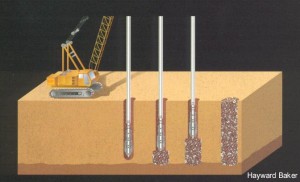
This schematic shows the various steps in the vibroreplacement process. First, the vibroflot penetrates the ground to the desired depth. Stone is then progressively introduced to the hole, and the vibroflot is alternately raised and lowered to produce a packed stone column.
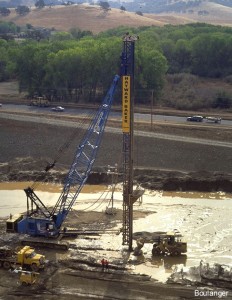
A crane lifts the vibrating probe or vibroflot. A front-end loader is feeding coarse stone (aggregate) in at the top of the hole around the vibroflot
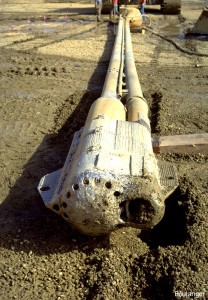
End of vibroflot. The tube on the right is used to deliver stone to the tip of the probe while it is in the ground. The small tube on the left is a water/air jet to assist the vibroflot in penetrating to the desired depth and in flushing the hole as necessary.
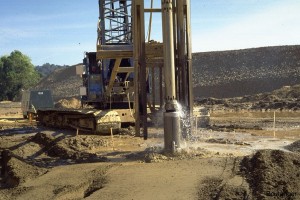
The vibroflot begins to penetrate the ground. The horizontal vibrations of the vibroflot are what cause the water to splash around. The water jet assists the probe in penetrating to the full desired depth.
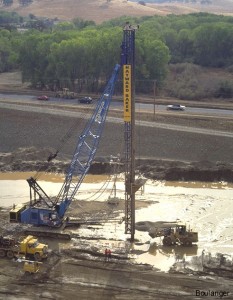
The hopper on the crane brings the stone to the top of the vibroflot where it can be transmitted down a chute to the tip of the vibroflot. The front-end loader also dumps stone at the top of the hole.

